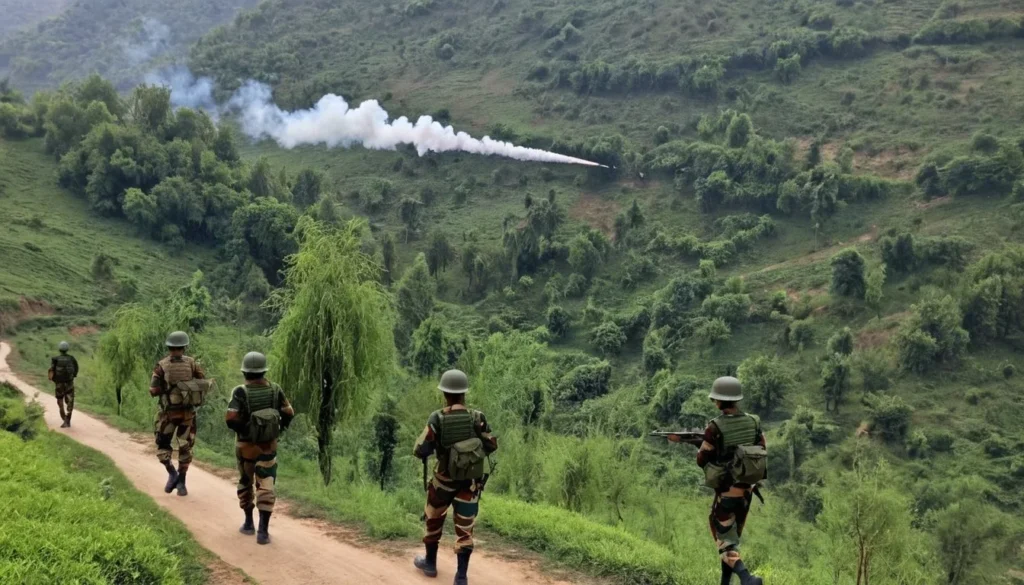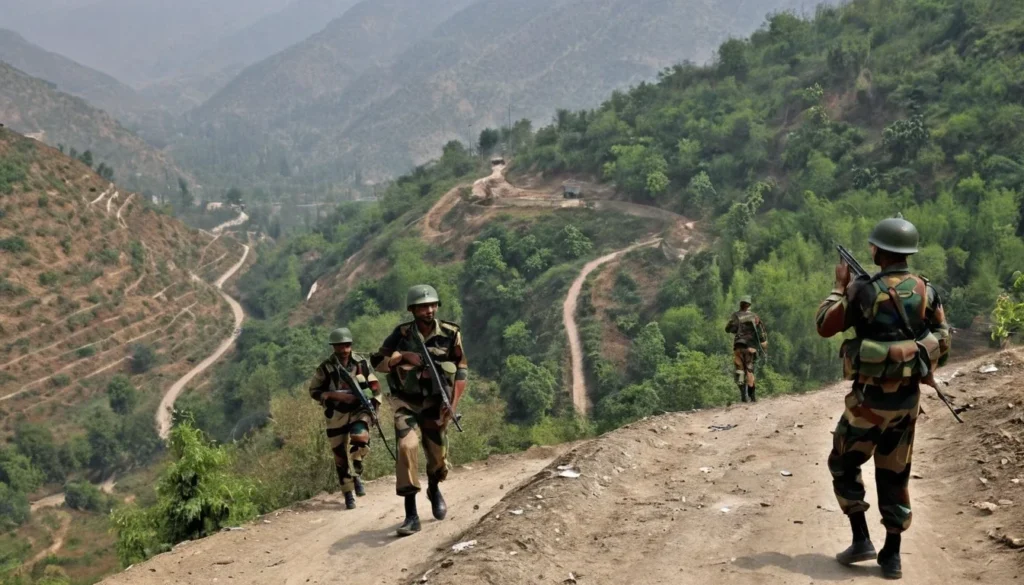
The Indo-Pak relationship has always been complex, heavily influenced by history, politics, and frequent military confrontations. In 2025, tensions between India and Pakistan continue to make headlines globally, especially regarding the Line of Control (LoC), ceasefire violations, and diplomatic stand-offs. In this article, we bring you the latest updates on Indo-Pak border clashes, ceasefire violations, and what they mean for regional security and peace efforts.
Understanding the Indo-Pak Conflict: A Brief Overview
The India Pakistan conflict stems primarily from territorial disputes over Jammu and Kashmir. Since the Partition in 1947, the two nations have fought multiple wars, with thousands of soldiers and civilians affected over the decades.
The Line of Control (LoC), a de facto border established after the 1947–1948 war, remains one of the most heavily militarized zones in the world. Despite numerous peace agreements, such as the 2003 ceasefire agreement, incidents of ceasefire violations have frequently disturbed the fragile peace along the LoC.
Latest Indo-Pak Border News (2025)

According to LoC news today, recent months have witnessed a worrying uptick in cross-border firing incidents. Both India and Pakistan have accused each other of unprovoked firing, leading to casualties among soldiers and civilians.
Key Recent Incidents:
- March 2025: Reports indicate heavy shelling in the Poonch sector of Jammu and Kashmir. Indian army officials claimed that Pakistani forces initiated the firing, prompting a strong retaliation.
- April 2025: Two Indian soldiers and three civilians were killed after an intense exchange of gunfire across the LoC. Pakistan accused India of violating the ceasefire agreement, whereas Indian officials labeled it a “pre-emptive action against terror infiltration.”
- April 25, 2025: Pakistani authorities reported injuries to four civilians in the Neelum Valley region after what they described as “unprovoked Indian aggression.”
Both countries have summoned each other’s diplomats multiple times in recent weeks to lodge formal protests over the rising border tensions.
What Drives the Latest Tensions?
Several factors are contributing to the renewed friction:
1. Terrorist Infiltration Across Borders
India has consistently alleged that Pakistan-based terror groups attempt to infiltrate Kashmir through the LoC, especially during the summer months when snow melts and mountain passes become accessible.
The Indian military launched “Operation Shield 2025” aimed at fortifying key infiltration points along the LoC. Pakistani officials, however, claim that India uses the infiltration narrative to justify aggression at the Indo-Pak border.
2. Political Rhetoric and Elections
With elections around the corner in India, nationalist rhetoric often intensifies, fueling aggressive posturing on the Indo-Pak front. Similarly, internal political dynamics in Pakistan have created an environment where military responses gain public favor.
3. Diplomatic Stalemate
Peace talks between India and Pakistan have stalled since late 2023 after the collapse of backchannel negotiations facilitated by a third-party country. Without diplomatic engagement, even minor border incidents escalate quickly into larger military confrontations.
The Human Cost of Ceasefire Violations

Every ceasefire violation at the LoC results in tragic consequences for civilians living near the border.
- Casualties: Dozens of civilians, including women and children, have lost their lives over the past year.
- Displacement: Border villages are frequently evacuated when firing intensifies, leading to widespread displacement and economic hardship.
- Psychological Trauma: Years of living under the constant threat of shelling have had severe psychological impacts on the local population.
Local residents often demand stronger ceasefire agreements and the establishment of peace corridors to ensure safety and stability.
International Reactions to Indo-Pak Tensions
The international community closely monitors developments between India and Pakistan due to the nuclear capabilities of both nations.
Key Responses:
- United Nations: The UN Secretary-General urged both sides to exercise “maximum restraint” and resume dialogue.
- United States: The US State Department emphasized the need for a peaceful resolution and offered to mediate if both parties agreed.
- China: As a neighbor and regional power, China expressed concerns over escalating tensions and called for immediate diplomatic engagement.
Despite these appeals, both India and Pakistan have thus far resisted international mediation, insisting on bilateral dialogue under their terms.
Future Prospects: Is There Hope for Peace?
While the current situation remains tense, some recent developments offer a glimmer of hope:
- Backchannel Talks: Reports suggest that intelligence officers from both countries have been quietly meeting in neutral locations to explore ways to reduce border clashes.
- Trade Initiatives: Some policymakers advocate for reopening trade routes and cross-border commerce as a way to build trust.
- Track II Diplomacy: Civil society organizations and veteran diplomats are working behind the scenes to promote people-to-people contact and cultural exchanges.
However, any lasting peace will require strong political will on both sides to prioritize dialogue over confrontation.

Conclusion
The Indo-Pak conflict is far from over, with border tensions and ceasefire violations continuing to pose a significant threat to regional peace. Civilians, soldiers, and policymakers alike hope for a future where differences are resolved through dialogue, not violence.
As the situation develops, IndoPakUpdates.online remains committed to providing accurate, timely, and balanced coverage of all major events surrounding Indo-Pak tensions.
Stay tuned for more real-time updates, expert analysis, and exclusive reports on the India-Pakistan relationship.